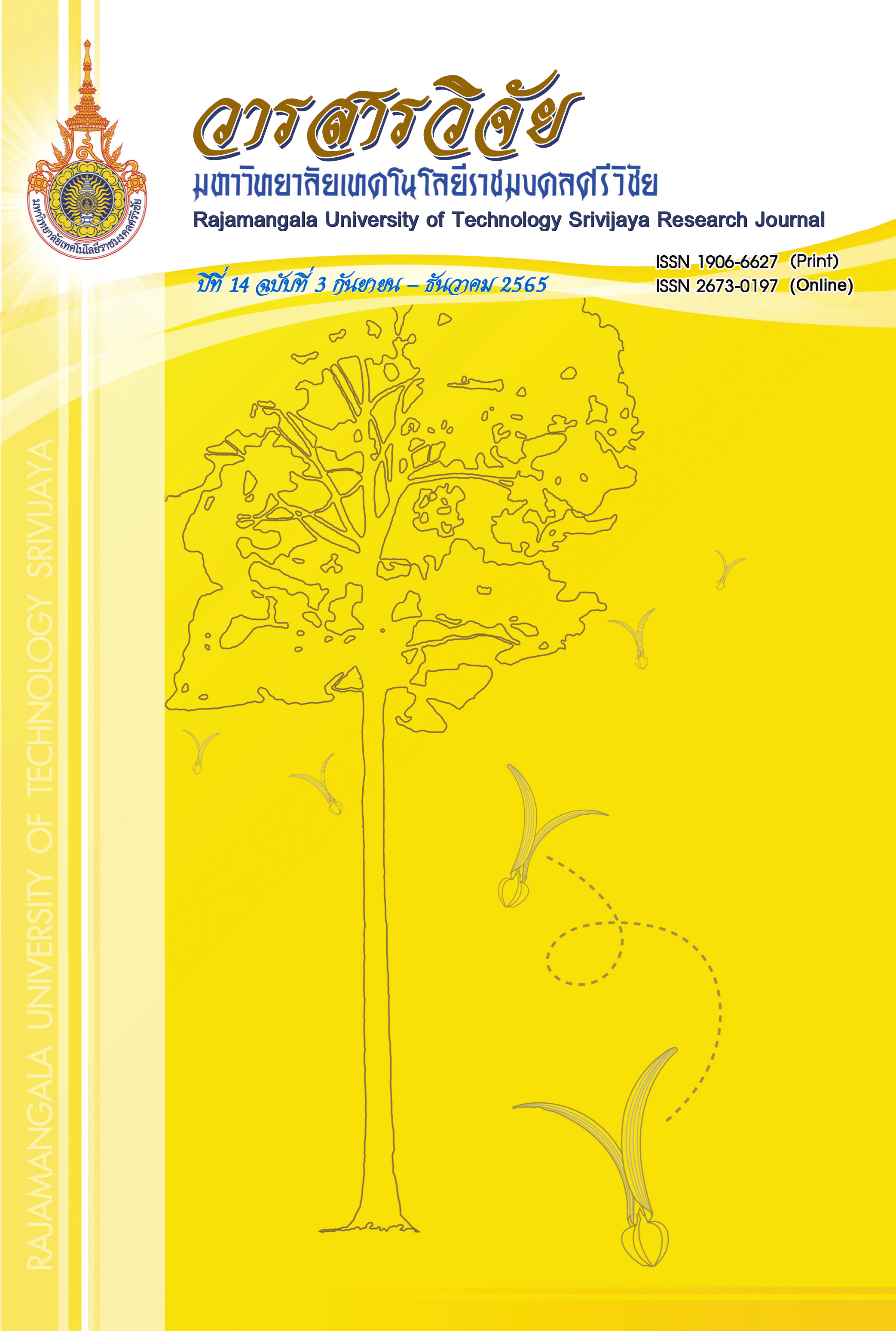Antifungal Activity of Lactic Acid Bacteria Against Penicillium digitatum
Keywords:
lactic acid bacteria, Lactobacillus pentosus, antifungal activity, Penicillium digitatumAbstract
The aim of this study was to isolate lactic acid bacteria with antifungal activity against Penicillium digitatum, a major source of post-harvest decay in citrus. Thirty-eight and 32 isolates were isolated from vegetables and fruits (basil, coriander, mao and papaya) and fermented foods (fermented lettuce, fermented spider weed, Thai traditional fermented beef sausage and fermented cattle feet), respectively. Some morphological and physiological characteristics were investigated. Glucose fermentation patterns are both homofermentative and heterofermentative. Titratable acidity as lactic acid was from 0.10 % to 1.49% (pH 4.44 to 6.28). Six lactic acid bacterial isolates had displayed high antifungal activity against Penicillium digitatum by an agar well diffusion assay. The diameter of inhibition zones was found to range between 11.16±1.30 to 24.23±5.63 mm. Both cell suspension and cell-free supernatant exhibited inhibitory effect against the target mold. Identification by 16S rRNA gene sequencing showed that all six isolates were Lactobacillus pentosus (99% identity). Lactic acid bacterial isolates with antagonistic activity could be good biocontrol candidate against P. digitatum in citrus.
References
Abbaszadeh, S., Tavakoli, R., Sharifzadeh, A., Shokri, H. 2015. Lactic acid bacteria as functional probiotic isolates for inhibiting the growth of Aspergillus flavus, A. parasiticus, A. niger and Penicillium chrysogenum. Journal of Medical Mycology 25(4): 263-267.
AOAC. 2000. Official Method of Analysis. 17th ed. Association of Official Analytical Chemists, Washington, D.C.
Axelsson, L. 2004. Lactic acid bacteria: Classification and physiology, pp. 1-66. In Salminen, S. and Wright, A.V., eds. Lactic Acid Bacteria: Microbiological and Functional Aspects. Marcel Dekker Inc., New York.
Dalie, D.K.D., Deschamps, A.M. and Richard-Forget, F. 2010. Lactic acid bacteria-potential for control of mould growth and mycotoxins: a review. Food Control 21(4): 370-380.
Denkova, R., Denkova, Z., Yanakieva, V. and Blazheva, D. 2013. Antimicrobial activity of probiotic lactobacilli, bifidobacteria and propionic acid bacteria, isolated from different sources. Microbial Pathogens and Strategies for Combating Them: Science Technology and Education 2: 857-864.
Di Cagno, R., Coda, R., De Angelis, M. and Gobbetti, M. 2013. Exploitation of vegetables and fruits through lactic acid fermentation. Food Microbiology 33: 1-10.
Gerez, C.L., Carbajo, M.S., Rollán, G., Torres, L.G. and Font de Valdez, G. 2010. Inhibition of citrus fungal pathogens by using lactic acid bacteria. Journal of Food science 75(6): M354-359.
Lindgren, S.E. and Dobrogosz, W.J. 1990. Antagonistic activities of lactic acid bacteria in food and feed fermentations. FEMS Microbiology Reviews 7: 149-163.
Liu, W., Pang, H., Zhang, H. and Cai, Y. 2014. Biodiversity of lactic acid bacteria, pp 103-203. In Zhang, H. and Cai, Y., eds. Lactic Acid Bacteria. Springer, Dordrecht.
Ma, J., Hong, Y., Deng, L., Yi, L. and Zeng, K. 2019. Screening and characterization of lactic acid bacteria with antifungal activity against Penicillium digitatum on citrus. Biological Control 138: 1-8.
Ouwehand, A.C. and Vesterlund, S. 2004. Antimicrobial components from lactic acid bacteria, pp. 375-395. In Salminen, S., Von Wright, A. and Ouwehand, A., eds. Lactic Acid Bacteria: Microbiological and Functional Aspects. Marcel Dekker, Inc., New York.
Palou, L. 2014. Penicillium digitatum, Penicillium italicum (Green Mold, Blue Mold), pp.45-102. In Bautista-Baños, S., eds. Postharvest Decay. Academic Press, Elsevier Inc., London, UK.
Rezac, S., Kok, C.R., Heermann, M. and Hutkins, R. 2018. Fermented foods as a dietary source of live organisms. Frontiers in Microbiology 9: 1785. doi: 10.3389/fmicb.2018.01785.
Ruiz Rodríguez, L.G., Florencia, M., Juliana, B., Roxana, M., Luc, D.V., Hebert, E.M. and Fernanda, M. 2019. Diversity and functional properties of lactic acid bacteria isolated from wild fruits and flowers present in Northern Argentina. Frontiers in Microbiology 10: 1091. doi: 10.3389/fmicb.2019.01091.
Temitope, F.P. and Oluchi, U.E. 2015. Studies on the antifungal activity of Lactobacillus plantarum and Lactobacillus fermentum on spoilage fungi of tomato fruit. Journal of Microbiology Research 5(3): 95-100.
Yang, J., Tan, H. and Cai, Y. 2016. Characteristics of lactic acid bacteria isolates and their effect on silage fermentation of fruit residues. Journal of Dairy Science 99(7): 5325-5334.
Downloads
Published
How to Cite
Issue
Section
License
Copyright (c) 2022 Rajamangala University of Technology Srivijaya Research Journal

This work is licensed under a Creative Commons Attribution-NonCommercial-NoDerivatives 4.0 International License.
The content and information in the article published in Journal of Rajamangala University of Technology Srivijaya It is the opinion and responsibility of the author of the article. The editorial journals do not need to agree. Or share any responsibility.







